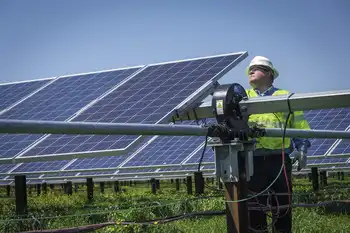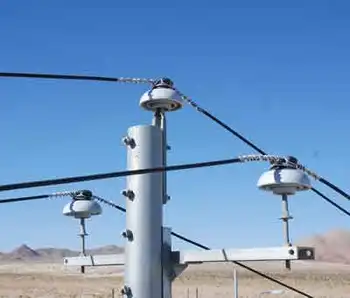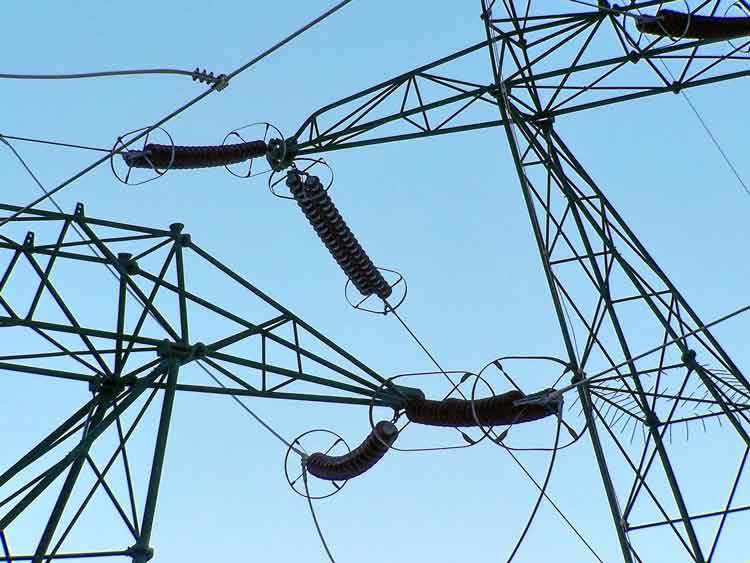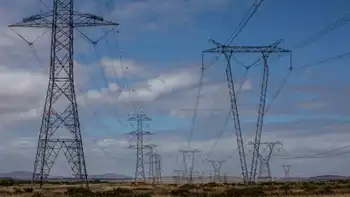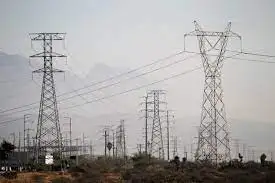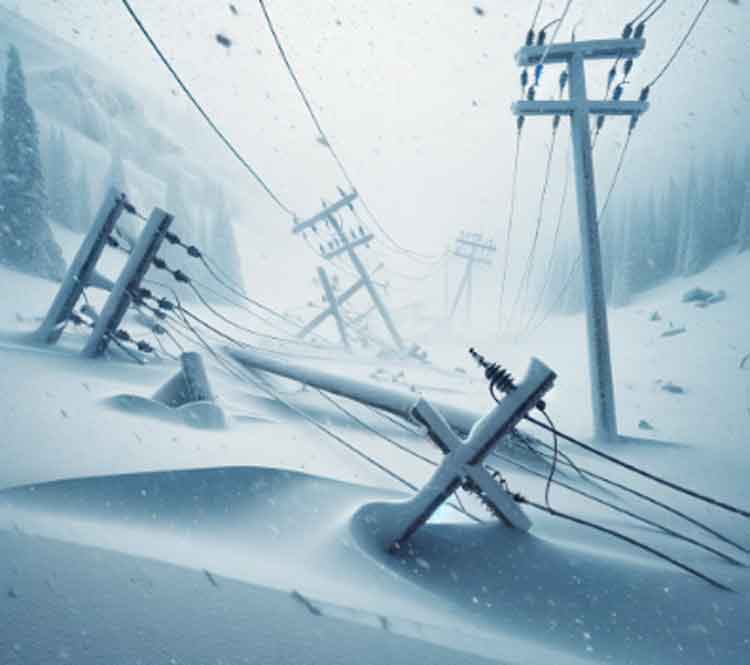The heat is on when it comes to coal plants
By Scientific American
NFPA 70e Training
Our customized live online or in‑person group training can be delivered to your staff at your location.

- Live Online
- 6 hours Instructor-led
- Group Training Available
Enormous metal pipes crisscross far overhead in a facility where the temperature is a little too hot to ignore, and the machinery's din is deafening.
Nelson, a senior vice president and chief operating officer at Sunflower Electric Power Corp. unhooks a heavy latch and swings opens a large metal hatch to reveal the 26-year-old plant's fiery heart: a furnace where coal-fueled flames burning nonstop at about 2,500 degrees Fahrenheit (1,370 degrees Celsius) heat a 55,000-gallon (208,200-liter) boiler to produce 2,400 pounds per square inch (170 kilograms per square centimeter) of high-pressure steam. The hulking gray metal turbine that converts the steam into electricity, which will energize the aging high-power transmission lines of western Kansas, recalls the size and streamlined form of a 1930 steam locomotive.
"I just want to build power plants to meet system need," says Nelson, who notes that his analysis of the energy needs of western and central Kansas found that even the most energy-efficient program won't meet the demand that will grow over the next several decades. So, he wants to build two new 700-megawatt coal-fired plants on the site.
In early May, Sunflower Electric, a cooperative of six utilities serving around 400,000 customers, got its wish — or at least part of it: Newly sworn in Gov. Mark Parkinson announced a compromise with the utility that will allow it to build one new 895-megawatt coal-fired plant. That was only after two years of fighting with the state's executive branch to expand its Holcomb operation — plans vetoed three times in 2008 and once in 2009 by then-Governor Kathleen Sebelius.
The confrontation catapulted Kansas and Sunflower onto the front lines of the national debate about ending the nation's dependence on coal-fired power.
No plumes of black smoke float from the Holcomb Station's smokestack into the wide-open Kansas sky, as much of the toxic ash by-products from burning the coal (over 1.5 million tons a year) are scrubbed from the plant's emissions and stored in nearby containment ponds. But Holcomb does emit 1.5 million to 1.7 million tons of carbon dioxide per annum — the invisible greenhouse gas that is the leading driver of human-propelled global warming. This is one of the main reasons many — including Sebelius — opposed the two coal-fired plants, which would have generated more than 11 million tons a year of CO2.
The proposed 895-megawatt plant will create around seven million tons of CO2, according to Stephanie Cole, a Kansas City, Kans.–based campaigner with the Sierra Club. Kansas will be responsible for all that CO2, while getting less than a quarter of the power generated by the plant The rest of the power will go to two power wholesalers helping to co-finance the Holcomb expansion: Colorado's Tri-State Generation and Transmission, which supplies power to 44 electrical cooperatives in Colorado, Nebraska, New Mexico and Wyoming; and Texas-based Golden Spread Electric Cooperative, which serves 16 electrical cooperatives in Texas and the Oklahoma panhandle.
About a year ago, Sunflower Electric refused to take Gov. Sebelius up on a very similar compromise: building a 660-megawatt coal-fired plant that would provide power exclusively to Kansans while creating less of a CO2 load on the state, along with increasing the company's total wind power capacity to 20 percent. Instead the company challenged an earlier air-quality permit denial in state court, and sued the Sebelius administration last November in federal court. (The judge in the federal case is considering a motion by the defendants to dismiss the case; Clare Gustin, a Sunflower vice president, says the company will withdraw the federal lawsuit when it receives an air quality permit from the state to build the new plant.)
"Sunflower was the first, major high-profile decision denying a permit for a coal plant, but since then there's been dozens and dozens of them. In almost every case, climate risk has come up," says Patrick Parenteau, an environmental law professor at Vermont Law School. "It's part of a massive transformation of the energy industry, and it caught all these utilities by surprise."
Meanwhile, the economics of relying on coal-fired power are shifting: Over the strenuous objections of the Bush administration, in 2007 the U.S. Supreme Court held in the case Massachusetts v. EPA, that the U.S. Environmental Protection Agency (EPA) could, and probably should, regulate carbon dioxide as an air pollutant under the Clean Air Act.
The Obama administration has moved swiftly on the ruling. In April, the EPA released its finding that "greenhouse gases in the atmosphere endanger the public health and welfare of current and future generations." The EPA's conclusion will be finalized in early summer, giving the agency authority to monitor and mandate reductions on industrial carbon dioxide emissions as well as five other global warming pollutants.
And the U.S. House of Representatives is debating legislation that would cap CO2 emissions and create a market to trade pollution permits — the Obama administration's preferred method for reducing the nation's CO2 output. That could mean more expenses for power generators that release CO2.
Sunflower says it doesn't know how much it will cost to build the 895-megawatt plant, but it estimated the two 700-megawatt plants would have cost at least $3.6 billion. "Is this plant still going to make sense for Kansas and for this market," Parenteau says, "once you start factoring in all these costs?"
Should the new Holcomb plant move forward, Kansas will become something of a living laboratory experiment on the comparative economic benefits of wind versus coal: The Siemens Corp. recently announced plans to build a $50-million facility in Hutchinson — a central Kansas city of around 41,000 — to manufacture nacelles, the tubular enclosures atop wind towers that contain electronics, generators and gears. The factory is expected to turn out its first nacelle toward the end of 2010, and will employ around 400 people.
Jamie Jarnagin, mayor of Holcomb, is pleased that Sunflower and the state seem to be coming to terms. "My opinion is it's going to be a huge economic boost for the local area," he says. "You have to grow or you lose out. A lot of the small towns in western Kansas are having a hard time making it, and we want to avoid that." A statement from Gov. Parkinson's office estimates that there will be 1,500 jobs created at the peak of construction of the new plant.
Holcomb Station currently employs around 130 people; Jarnagin believes the new plant would create around 60 to 100 additional permanent jobs.
As part of the compromise, Sunflower Electric must permanently retire two oil-burning power plants in Garden City, just up the road from Holcomb. The utility, which operates within a swath of the Midwest that's been nicknamed "the Saudi Arabia of wind" for its potential to generate clean energy, will also be required to directly or indirectly develop around 180 megawatts of wind power generation, in addition to meeting a newly enacted state law requiring utilities to obtain 20 percent of their power from renewable sources by 2020. (Under the compromise, Sunflower must meet this standard by 2016.) The utility pulls about 10 percent of its total 1,254-megawatt generating capacity from wind power. Of the rest, it generates 42 percent from coal-fired power, and 48 percent from natural gas.
The Sierra Club, Cole says, was surprised and disappointed by the deal. Sunflower has agreed to a little over three million tons in carbon offsets in the compromise, which "don't come close," she says, to accounting for the greenhouse gas emissions that the proposed plant would produce. For instance, "those oil plants haven't been operated for the past two decades," she says, and add up to only seven megawatts of power generation.
The compromise also states that Sunflower will replace a percentage of coal at both plants with biomass fuels such as waste wood. But as the agreement is written, "if it's not technically or economically feasible, they don't have to do it," Cole says. Other "green power" provisions of the compromise are equally equivocal, she adds, such as making "reasonable efforts" to build a biofuel-powered energy center.
"It's just packed with elements that aren't enforceable," Cole says. "For many of us that have concerns about the CO2 emissions, we want to see something that has teeth."
Back at Holcomb Station, Kyle Nelson seems to acknowledge that carbon dioxide represents a danger — he doesn't deny it outright, anyway. But Nelson is not convinced that America is really ready to mobilize for what it will take to end our reliance on coal-fired power, which provides half the nation's electricity.
"Society is sending me so many mixed signals," he says. "If this is really an emergency then okay — throw the switch. But realize that the lights are going to go out."





